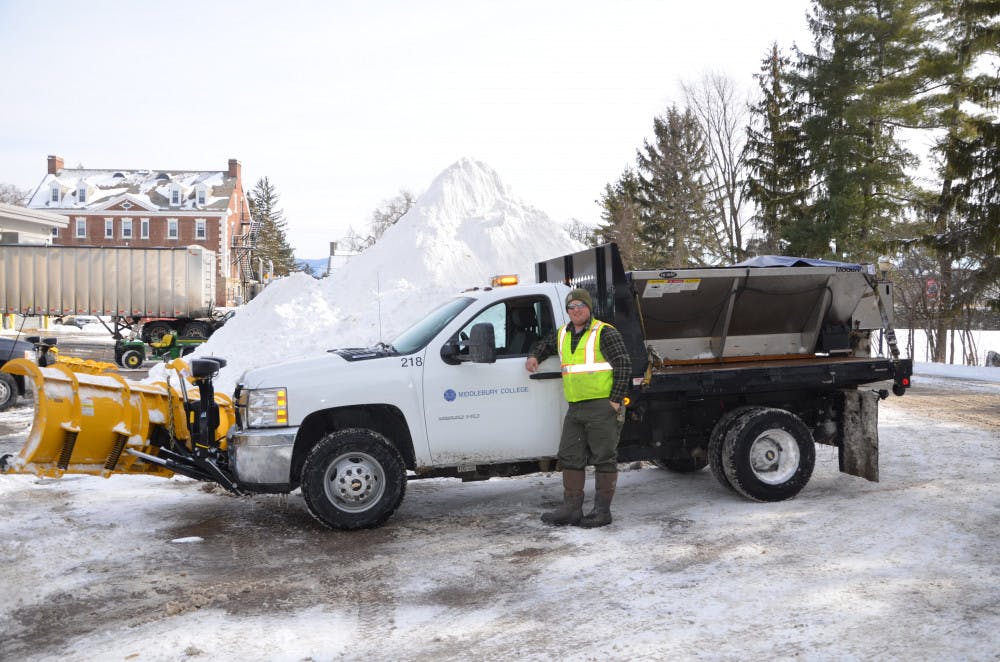After just a few minutes aboard the white maintenance truck, Clinton Snyder, the landscape supervisor at the College, noticed that I had forgotten gloves. Buzz, as he is fondly known, kindly offered me his own, and explained that the success of campus snow removal depends on the entire crew.
“The campus is divided into North, Central and Athletics,” he informed me, “and all of the entrances around every building have to be clean.”
After snowstorms like Wednesday’s, a variety of departments work together to clean up campus.
“It’s not just the landscaping crew,” Snyder said. “It’s the custodials, the carpentry, electrical, Plumbing, HPAC – we all come in as a team.”
The various crews are each assigned to sections of the campus.
“Say you got crew eight,” he said, “They’ll take care of Bihall, the Mods, Ridgeline woods, the Bunker house, Adirondack view [...] they know what section to go through.”
Workers also carry radios to contact each other and Snyder, who may reassign them to “problem areas.” Like an officer driving a Jeep through the battlefield, Snyder continually lauded his “men” for their expertise and hard work.
“There are a few guys who have been here fifteen plus years,” he informed me reverently.
“[Roger Bagley] can run that backhoe like you can move your hand,” he said as we drove by the massive machine. “He could pick up a glass on the ground without breaking it.”
Although machines like Bagley’s account for some of the work, many areas can only be cleared by shoveling. If all ten crews are working, Snyder figured they can clear the campus in three or four hours.
Not all of the shoveling is straightforward, either. The top of Bihall is cleared without snowblowers because ventilators could draw fumes from the machines into the building. “It’s big and it’s windy,” he said of the roof. “So you’ll throw over a shovel, and you gotta duck because sometimes it comes right back at you.”
Since the campus has roughly 200 buildings, 13 miles of sidewalk, and spans across 300 acres, certain buildings take precedence. Public Safety, both dining halls, residences and areas of heavy student-traffic all are prioritized.
As Snyder drove by the Feb. orientation in Axxin, he gestured towards the building. “Right now the freshman are coming in with their parents for the luncheon,” he said, “so we want to make sure that whole area is clean.”
Many bleary-eyed students began their spring semesters with an early meal in Ross or Proctor. However, in order to keep the dining halls open after the storm, maintenance began their work long before 8 a.m.
“We’ll come in at three in the morning. [...] We do most of the plowing in the morning,” Snyder hollered above the din of the truck’s engine. “Right now we’re just trying to stay on top of it. I’ll have all of the shovelers come in at six.”
Although the job is taxing, Snyder laughed when asked if clearing the sidewalks so students can walk to spin class has made him bitter over the years.
“I’m not bitter,” he chuckled. “I’m just amazed at what we do. I want other people to realize that we work hard here.”
Buzz, One; Mother Nature, Zero

Comments


